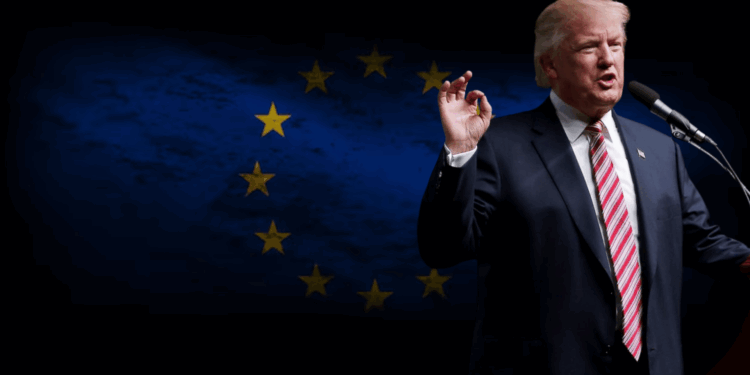- Trump threatened a 35% tariff on EU exports if Brussels fails to invest $600B in U.S. infrastructure under a recent trade agreement.
- EU officials say the investment and purchase commitments are non-binding “projections,” not enforceable obligations.
- Disagreements persist over defense purchases, key export sectors, and the size of the U.S.–EU trade imbalance.
President Donald Trump has warned that the European Union will face a 35% tariff if it fails to deliver on a pledge to invest $600 billion in U.S. infrastructure. Speaking to CNBC on Tuesday, Trump said the investment was part of a broader EU–U.S. trade agreement that also lowered U.S. tariffs on most EU exports from 30% to 15%. In exchange, the EU committed to purchasing $750 billion worth of U.S. energy and reducing its own tariffs on various goods.
Trump described the $600 billion as a “gift” from the EU, not a loan, claiming it was compensation for what he called decades of unfair trade practices. “They’ve been ripping us for so many years that it’s time they pay up,” he said. He also noted that other countries have questioned why the EU received lower tariffs, explaining it was because of this payment.
Disputes Cloud the Deal’s Details
Despite Trump’s framing, EU officials have stressed that the commitments are not legally binding, but rather “projections” based on private sector intentions. Disagreements remain over key areas, including steel, pharmaceuticals, and alcohol exports. Analysts have described the deal as rushed and “chaotic,” suggesting it may not constitute a formal agreement at all.
The White House has also claimed the EU agreed to purchase significant amounts of U.S. military equipment, a point Brussels has rejected. An EU official said a joint statement—“90-95% ready”—would soon provide more clarity, though it may not resolve the dispute over defense procurement.
Deficit Disputes and Political Context
Trump has long criticized the U.S. trade deficit with the EU, which he claims is $350 billion. European Commission data shows a much smaller gap: a €50 billion overall surplus for the EU in 2024, with a €200 billion goods surplus offset by a €150 billion services deficit. While Trump sees the infrastructure payment as essential for reducing deficits, Brussels maintains its commitments are subject to market forces, not political decrees.














